11th International Topical Meeting on
Industrial Radiation and Radioisotope Measurement Applications
3-8 July 2022 Moscow, Russia
Golden Ring Hotel



 IRRMA 2022
IRRMA 202211th International Topical Meeting on
Industrial Radiation and Radioisotope Measurement Applications
3-8 July 2022 Moscow, Russia
Golden Ring Hotel



Professor David BRADLEY
TL, Raman Spectroscopy and XRD Analysis of various Glass-Carbon Dosimetric Materials
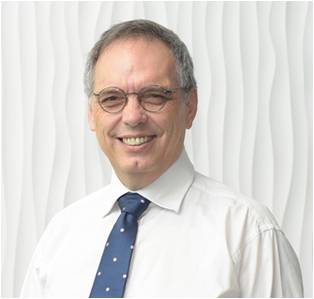 David Bradley PhD (USM), MSc (London), BSc (Essex), Professor Emeritus University of Surrey, Distinguished Professor, Centre for Biomedical Physics, Sunway University. During his career he has been Secretary of the International Radiation Physics Society (IRPS), currently its President, also for some years Editor-in-Chief of the British Journal of Radiology (the oldest journal of radiology in the world) and the journals Applied Radiation and Isotopes and Radiation Physics and Chemistry. His interests in the fundamentals of radiation interactions have turned to applications in biomedical areas and industry as well as in areas concerning development of luminescence dosimeters, two companies being born out of this (TrueInvivo in the UK and Lumisyns in Malaysia). He has supervised some 30 PhD students through to graduation and as a result of global collaborations he has been an author of some 500 publications.
David Bradley PhD (USM), MSc (London), BSc (Essex), Professor Emeritus University of Surrey, Distinguished Professor, Centre for Biomedical Physics, Sunway University. During his career he has been Secretary of the International Radiation Physics Society (IRPS), currently its President, also for some years Editor-in-Chief of the British Journal of Radiology (the oldest journal of radiology in the world) and the journals Applied Radiation and Isotopes and Radiation Physics and Chemistry. His interests in the fundamentals of radiation interactions have turned to applications in biomedical areas and industry as well as in areas concerning development of luminescence dosimeters, two companies being born out of this (TrueInvivo in the UK and Lumisyns in Malaysia). He has supervised some 30 PhD students through to graduation and as a result of global collaborations he has been an author of some 500 publications.
Professor Christopher CHANTLER
Plasmon-Coupling Theory of the Electron Inelastic Mean Free Path, energy loss
functional and the dielectric function for LEEM, for low energy electrons
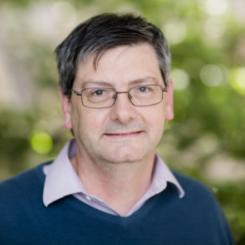 Christopher Chantler is Professor of Physics at the University of Melbourne where his major research interests include high-accuracy XAS in transmission and fluorescence, XERT and Hybrid techniques at synchrotrons, atomic and condensed matter theory and experiment, and tests of Quantum Electrodynamics [QED] at Electron Beam Ion Traps [EBITs]. He is a Fellow of the AIP and APS. He received his PhD from Oxford in High-accuracy X-ray tests of Quantum Electrodynamics and following fellowships at Oxford and the National Institute for Standards and Technology, Maryland, USA. He returned to Australia and the University of Melbourne some 25 years ago.
Christopher Chantler is Professor of Physics at the University of Melbourne where his major research interests include high-accuracy XAS in transmission and fluorescence, XERT and Hybrid techniques at synchrotrons, atomic and condensed matter theory and experiment, and tests of Quantum Electrodynamics [QED] at Electron Beam Ion Traps [EBITs]. He is a Fellow of the AIP and APS. He received his PhD from Oxford in High-accuracy X-ray tests of Quantum Electrodynamics and following fellowships at Oxford and the National Institute for Standards and Technology, Maryland, USA. He returned to Australia and the University of Melbourne some 25 years ago.
Dr. Melissa DENECKE
Radiation and Radioisotope Applications - IAEA-NAPC
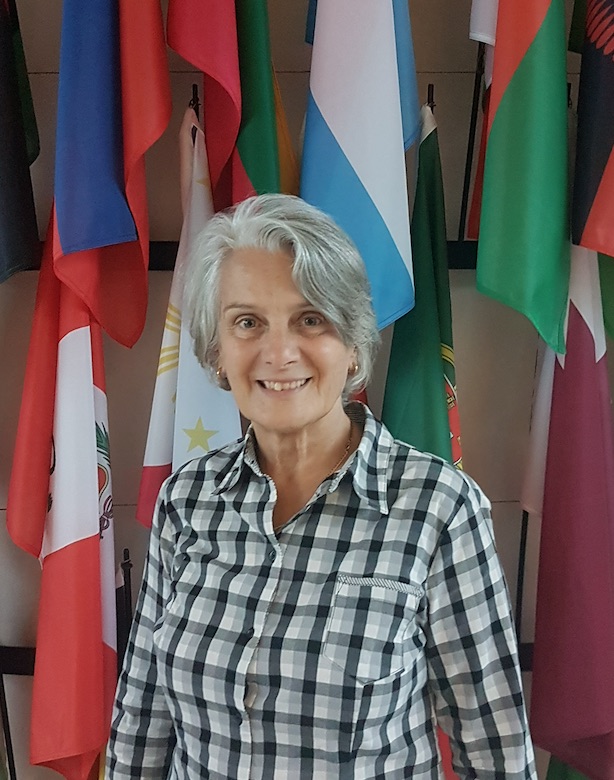 Director of the Division of Physical and Chemical Sciences in the Department of Nuclear Sciences and Applications at the International Atomic Energy Agency in Vienna. Previously, she was Scientific Director of the Dalton Nuclear Institute at The University of Manchester, Manchester, United Kingdom, holding a Chair in the University’s School of Chemistry. Before that, she was department head for ‘Actinide Speciation’ at the Institute for Nuclear Waste Disposal, Karlsruhe Institute of Technology, Germany. Other positions held were at the School of Engineering, Offenburg, Forschungszentrum Rossendorf e.V. (FZR) and Universität Hamburg. She is radiochemist and an internationally recognised expert in application of state-of-the-art techniques for radionuclide characterisation on a molecular scale using a number of accelerator-based and research reactor techniques. Her research interests focus on actinide and separations chemistry, immobilisation processes at interfaces, numerous aspects of radioactive waste disposal and assessment of legacies and combining spectroscopic speciation with modelling. She is a member of the Royal Society of Chemistry, receiving the Becquerel Medal Award for Radiochemistry in 2016 and the Distinguished Lecturer Award in Environmental Chemistry in 2019; the American Chemical Society, Gesellschaft Deutscher Chemiker; American Vacuum Society; International XAFS Society; Geochemical Society; Kerntechnische Gesellschaft e.V.; Nuclear Institute; Women in Nuclear Germany, UK and Global, having served as Executive Board Member.
Director of the Division of Physical and Chemical Sciences in the Department of Nuclear Sciences and Applications at the International Atomic Energy Agency in Vienna. Previously, she was Scientific Director of the Dalton Nuclear Institute at The University of Manchester, Manchester, United Kingdom, holding a Chair in the University’s School of Chemistry. Before that, she was department head for ‘Actinide Speciation’ at the Institute for Nuclear Waste Disposal, Karlsruhe Institute of Technology, Germany. Other positions held were at the School of Engineering, Offenburg, Forschungszentrum Rossendorf e.V. (FZR) and Universität Hamburg. She is radiochemist and an internationally recognised expert in application of state-of-the-art techniques for radionuclide characterisation on a molecular scale using a number of accelerator-based and research reactor techniques. Her research interests focus on actinide and separations chemistry, immobilisation processes at interfaces, numerous aspects of radioactive waste disposal and assessment of legacies and combining spectroscopic speciation with modelling. She is a member of the Royal Society of Chemistry, receiving the Becquerel Medal Award for Radiochemistry in 2016 and the Distinguished Lecturer Award in Environmental Chemistry in 2019; the American Chemical Society, Gesellschaft Deutscher Chemiker; American Vacuum Society; International XAFS Society; Geochemical Society; Kerntechnische Gesellschaft e.V.; Nuclear Institute; Women in Nuclear Germany, UK and Global, having served as Executive Board Member.
Professor William DUNN
Reflections on the Ubiquity of Monte Carlo Methods
 Bill Dunn is currently Professor at Kansas State University (KSU) in the Department of Mechanical and Nuclear Engineering and holds the title Don and Linda Glaser - Carl and Mary Ice Cornerstone Teaching Scholar. He has held several positions within the International Radiation Physics Society and currently serves as Treasurer. Prior to his service at KSU, he was President of Quantum Research Services, Inc., a private contract research firm. Bill was recognized in 2015 by the American Nuclear Society with the Radiation Science and Technology Award. He is co-author (with J.K. Shultis) of the book Exploring Monte Carlo Methods, published by Elsevier.
Bill Dunn is currently Professor at Kansas State University (KSU) in the Department of Mechanical and Nuclear Engineering and holds the title Don and Linda Glaser - Carl and Mary Ice Cornerstone Teaching Scholar. He has held several positions within the International Radiation Physics Society and currently serves as Treasurer. Prior to his service at KSU, he was President of Quantum Research Services, Inc., a private contract research firm. Bill was recognized in 2015 by the American Nuclear Society with the Radiation Science and Technology Award. He is co-author (with J.K. Shultis) of the book Exploring Monte Carlo Methods, published by Elsevier.
Dr. Adolfo ESPOSITO
Radiological Safety Program for High Energy Accelerators
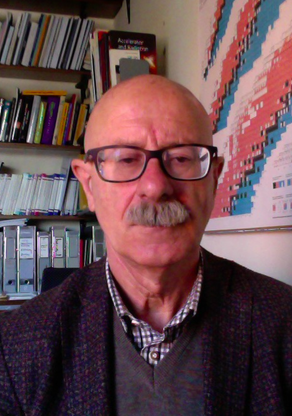 Adolfo Esposito is currently Radiation Protection Expert of the National Institute for Nuclear Physics - National Laboratories of Frascati (INFN-LNF). He is a member of EURADOS (European Radiation Dosimetry Group) involved in a high energy radiation field research activities. He is a member of ISO/TC 85/SC2 Radiation Protection WG 21 for standardisation of Dosimetry for exposure to cosmic radiation in civilian aircraft. He was involved as Radiation Protection Expert in the radiological safety program of DAFNE, SPARC, FLAME, STAR and ELI=GAMMA_GBS facilities. He currently involved as radiation protection expert in preliminary radiation protection design and CDR for EuPRAXIA@SPARC_LAB and MariX projects.
Adolfo Esposito is currently Radiation Protection Expert of the National Institute for Nuclear Physics - National Laboratories of Frascati (INFN-LNF). He is a member of EURADOS (European Radiation Dosimetry Group) involved in a high energy radiation field research activities. He is a member of ISO/TC 85/SC2 Radiation Protection WG 21 for standardisation of Dosimetry for exposure to cosmic radiation in civilian aircraft. He was involved as Radiation Protection Expert in the radiological safety program of DAFNE, SPARC, FLAME, STAR and ELI=GAMMA_GBS facilities. He currently involved as radiation protection expert in preliminary radiation protection design and CDR for EuPRAXIA@SPARC_LAB and MariX projects.
Professor Nikolai KALASHNIKOV
Channeling Radiation and Possible Applications
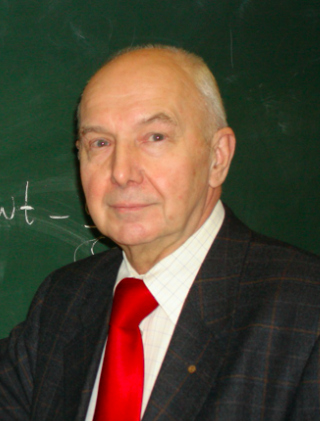 Nikolay Kalashnikov is Professor, Head of the General Physics Department of the National Research Nuclear University MIPhI, where his main scientific interests are related to solid state physics, the interaction of charged particles with aligned structures, the interaction of radiations with matter. He participated in research and taught in Italy (Bologna), Denmark (Aarhus), Egypt (Cairo), Spain (Murcia), USA (Oak Ridge). He is currently a member of the European Monitoring Committee FEANI.
Nikolay Kalashnikov is Professor, Head of the General Physics Department of the National Research Nuclear University MIPhI, where his main scientific interests are related to solid state physics, the interaction of charged particles with aligned structures, the interaction of radiations with matter. He participated in research and taught in Italy (Bologna), Denmark (Aarhus), Egypt (Cairo), Spain (Murcia), USA (Oak Ridge). He is currently a member of the European Monitoring Committee FEANI.
Dr. Timur KULEVOY
Ion Beam Facilities in ITEP-NRC “Kurchatov institute” for Material Science
 Timur Kulevoy is a Deputy Director for Accelerator Department in Institute for Theoretical and Experimental Physics of NRC “Kurchatov institute” where he works since 1986 after graduation Moscow Engineering-Physics Institute. His major research interests include ion sources and linear accelerators development as well as their application for reactor material investigation, semiconductor ion implantation, ion-plasma interaction investigation. He received his PhD in heavy ion sources (MEVVA, e-MEVVA, Bernas and ECR) development for linear accelerators and their application for fundamental physics and industry.
Timur Kulevoy is a Deputy Director for Accelerator Department in Institute for Theoretical and Experimental Physics of NRC “Kurchatov institute” where he works since 1986 after graduation Moscow Engineering-Physics Institute. His major research interests include ion sources and linear accelerators development as well as their application for reactor material investigation, semiconductor ion implantation, ion-plasma interaction investigation. He received his PhD in heavy ion sources (MEVVA, e-MEVVA, Bernas and ECR) development for linear accelerators and their application for fundamental physics and industry.
Dr. James TICKNER
Introducing Photonuclear Activation Analysis to the Minerals Industry:
Scientific, Engineering and Commercial Challenges
 James Tickner is the Chief Technology Officer at Chrysos Corporation, Honorary Professorial Fellow at the University of Wollongong and Adjunct Science Fellow at the CSIRO. His research career has focussed on the development of novel X-ray and nuclear techniques to solve challenging measurement and imaging problems for minerals and security industry applications. In 2016 he helped launch the start-up Chrysos to commercialise PhotonAssay, a photonuclear activation analysis technology for measurement of gold and other metals in mineral ores.
James Tickner is the Chief Technology Officer at Chrysos Corporation, Honorary Professorial Fellow at the University of Wollongong and Adjunct Science Fellow at the CSIRO. His research career has focussed on the development of novel X-ray and nuclear techniques to solve challenging measurement and imaging problems for minerals and security industry applications. In 2016 he helped launch the start-up Chrysos to commercialise PhotonAssay, a photonuclear activation analysis technology for measurement of gold and other metals in mineral ores.
Professor Michela TOSETTI
Magnetic Resonance and the Brain: Hunting for Mechanism with Quantitative Measurements
 Physicist, Director of Medical Physics and Magnetic Resonance Laboratory of IRCCS Stella Maris Scientific Institute and Imago7 Research Centre in Pisa - Italy, her research career has been dedicated to technical development of advanced Magnetic Resonance (MR) techniques, and their applications on humans, with the specific interest to understand cerebral and muscular mechanisms at various levels (structure, metabolism, function and connectivity). She has personally contributed to the Research in MR since 1996 with the construction of one of the first MR imaging center in Italy, and as Project Manager with the first installation (in 2011) of the only 7T MR human system in Italy. She teaches Physics of Magnetic Resonance at the master degree in Physics of University of Pisa; in 2013 she has obtained the qualification of Full Professor in Applied Physics, awarded by the Italian Government. She has a leading role in the development of quantitative MR techniques to the research of biomarkers in humans as demonstrated by several grants, collaborations and publications.
Physicist, Director of Medical Physics and Magnetic Resonance Laboratory of IRCCS Stella Maris Scientific Institute and Imago7 Research Centre in Pisa - Italy, her research career has been dedicated to technical development of advanced Magnetic Resonance (MR) techniques, and their applications on humans, with the specific interest to understand cerebral and muscular mechanisms at various levels (structure, metabolism, function and connectivity). She has personally contributed to the Research in MR since 1996 with the construction of one of the first MR imaging center in Italy, and as Project Manager with the first installation (in 2011) of the only 7T MR human system in Italy. She teaches Physics of Magnetic Resonance at the master degree in Physics of University of Pisa; in 2013 she has obtained the qualification of Full Professor in Applied Physics, awarded by the Italian Government. She has a leading role in the development of quantitative MR techniques to the research of biomarkers in humans as demonstrated by several grants, collaborations and publications.
Dr. Mitsutaka YAMAGUCHI
Real-Time Imaging Method of Ion Beams Measuring Prompt X-Rays for Particle Beam Therapies
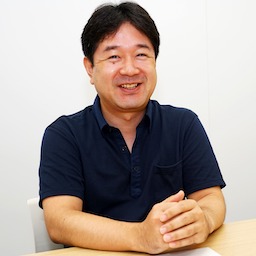 Mitsutaka Yamaguchi received his PhD in nuclear experimental physics in 2002. In 2009, he became a researcher at Takasaki Advanced Radiation Research Institute, and started research and development on radiation measurement and visualisation technology in the field of medicine and biology. His present interests are in research of medical and biological application of Compton cameras as well as particle-beam imaging methods.
Mitsutaka Yamaguchi received his PhD in nuclear experimental physics in 2002. In 2009, he became a researcher at Takasaki Advanced Radiation Research Institute, and started research and development on radiation measurement and visualisation technology in the field of medicine and biology. His present interests are in research of medical and biological application of Compton cameras as well as particle-beam imaging methods.
Dr. Hiroshi YOSHII
X-Ray Fluorescence Analysis of Trace Uranium in Soil
 Hiroshi Yoshii is Principal Researcher at National Institutes for Quantum and Radiological Science and Technology (QST), Japan. The Hiroshi Yoshii’s specialty is physics, and he is interested in the interaction of radiation including X-rays with matter. The targets of his research are human samples such as blood and environmental samples such as soil and water. His recent studied are on studying X-ray fluorescence analysis of long half-life radionuclides such as Uranium and Plutonium.
Hiroshi Yoshii is Principal Researcher at National Institutes for Quantum and Radiological Science and Technology (QST), Japan. The Hiroshi Yoshii’s specialty is physics, and he is interested in the interaction of radiation including X-rays with matter. The targets of his research are human samples such as blood and environmental samples such as soil and water. His recent studied are on studying X-ray fluorescence analysis of long half-life radionuclides such as Uranium and Plutonium.
| Abstract submission | 31/03/2022 |
| Early registration | 30/04/2022 |
| Hotel reservation | 30/04/2022 |
| Manuscript submission | 15/11/2022 |








